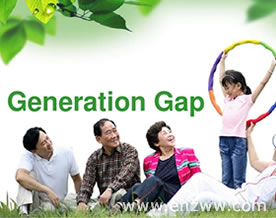Jiuzhaigou Valley is located in the Aba Tibetan and Qiang Ethnic Autonomous Prefecture in western Sichuan Province. If you take a bird's eye view, you'll see it's shaped like the letter Y and stretches more than 40 kilometers. Nine ethnic Tibetan villages are scattered across the valley, so it's called Jiuzhaigou, or the nine-village-valley.
Even for those who have traveled to many places in China, Jiuzhaigou is a pleasant surprise. Nerohem Yam from Israel is one example. The past few years have taken him to quite a few places of interest like Beijing, Shanghai, Zhejiang and Sha'anxi. But he fell in love with Jiuzhaigou's astonishing beauty at the very first sight.
"This is the most beautiful place in China. Because the landscape is very unique, the water colors are something exceptional, you don't see that in any other place in China."
The magic of Jiuzhaigou lies in the water, which is also where Jiuzhaigou's spirit resides. More than 100 alpine lakes of different sizes and brilliant colors are scattered in the valley.
The water is so pure and clear, you can count the pebbles, floating grass and fallen tree branches at the bottom. All the crystal-clear lakes have gorgeous colors, sometimes blue like sapphires or green like emeralds, and decorated with bright yellow touches.
Morishita Sadamasa, a tourist from Japan, can't help gasping in admiration.
"I have seen some videos of Jiuzhaigou's scenery back in Japan. But now that I'm here to see it in person, I find the view even more beautiful. There are lakes of the same kind in Japan, but I think Jiuzhaigou outstrips them all."
Jiuzhaigou's colorful waters come thanks to the conic karst landforms. The calcium, magnesium and carbonate ions abundant in the lake water are good at reflecting blue and green light. They also contain more than 200 types of algae in a variety of colors.
The lakes at Jiuzhaigou are located at different altitudes, creating the perfect environment for waterfalls to form. The valley has 17 waterfalls, including the 300-meter-wide Nuorilang Fall, the broadest single waterfall in China.
Little wonder the Chinese people call Jiuzhaigou Valley a fairyland on earth! It was included on the UNESCO World Natural Heritage List in 1992, but the local people have other reasons to take very good care of it.
A Tibetan girl, Yina Manhong, says the local Tibetans believe that everything inside the valley has been bestowed by divine powers.
"We local Tibetan people believe everything has a spirit and all those mountains and waters as well as trees and grasses are bestowed by the gods. We humans have every reason to protect them, not to damage them. The older people will tell their children not to wash clothes in the water or dispose anything filthy."
Yina Manhong and her fellow villagers still live in Jiuzhaigou Valley as their ancestors taught them to. They are friends with the natural world and hospitable to travelers who pass by.
One hundred thirty kilometers away from Jiuzhaigou Valley is another "Paradise on Earth," the Huanglong Park. It was included on the World Natural Heritage List in 1992, the same year as Jiuzhaigou Valley.
The Huanglong Park sprawls over 700 square kilometers and is surrounded by damp forests, mountains, coniferous woods and grasslands.
The region's big attraction is the karst formations that surface in the form of limestone pools, shoals and travertine falls.
People probably call this place Huanglong, or Yellow Dragon, because of the rock formations, which are just like yellow scales on the back of a gigantic dragon. The water is crystal clear and contains all kinds of minerals, drawn from the limestone mountain behind it. Each small pool displays heartbreakingly beautiful colors that would defy any painter's palette.
If you want to see the most charming part of Huanglong Park, you have to be on the mountaintop. It's three thousand meters above sea level and a non-stop walk from the bottom to the top takes about an hour. Altogether, it's a seven-kilometer uphill climb. The exertion can be a problem for many people. Kou Yahui, who is in charge of Huanglong Park, says they've found a solution to the problem.
"We now have tourist chair lifts, so travelers can take them to the mountaintop for sightseeing. We've also set up five cost-free oxygen bars for hikers along the way to the peak. They are totally free for travelers."
Once you get to the very top, you will find yourself at the Five-Color Pond, the eye of the Yellow Dragon. The surface ripples with baby blues and lush greens. The place is so dazzlingly unreal that people imagine it must be the place where goddesses come to bathe.
Alright, with a tour of this wonderland, we wind up today's trip to Sichuan. I'm YF. See you next time
hxw.red
© 2021-现在 好学英文网 软著登记号:2025SR2204462 湘ICP备2022000939号|













